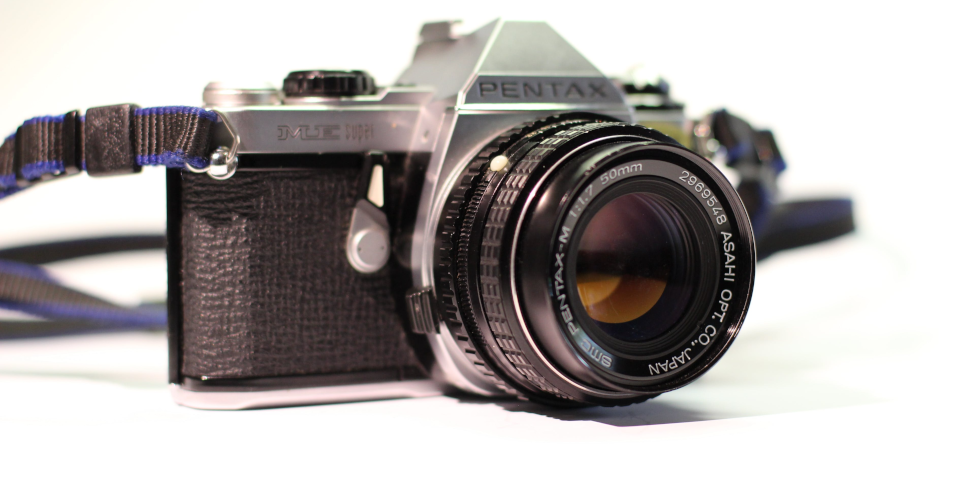6 Best Pentax Lenses in 2020
Pentax has long been known as a manufacturer of top-quality APS-C cameras. The advent of the K-1 marked the company’s embrace of full-frame designs and pushed its engineers to create lenses that equal the best the likes of Canon or Nikon have to offer.
Pentax lenses follow a general theme of excellent build quality and sharpness, no matter their intent or price point. All modern Pentax cameras have built-in image stabilization, which allows the company to concentrate on refining the optical properties and autofocus performance instead. The result is a duo that benefits everyone.
These are the six best Pentax lenses currently on the market. We’ve included full-frame and APS-C models for varying types of photography, so choosing the right one for your needs isn’t difficult. Check out what each can offer and start pushing your Pentax camera to its physical and creative limits.
| Budget |
|---|
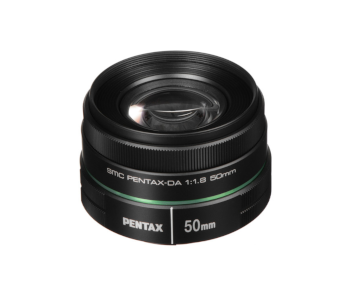 |
| Pentax SMC DA 50mm f/1.8 |
| 4.2/5.0 |
| Weight: 4.3 oz. |
| Type: Standard prime |
| It has no CA or distortion issues. |
| Check B&H |
| Best Value |
|---|
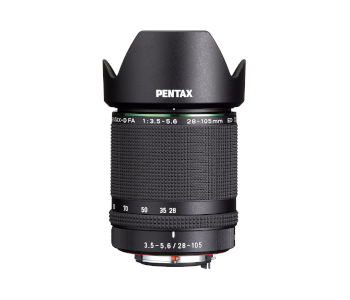 |
| Pentax D FA 28-105mm F3.5-5.6ED DC WR HD |
| 4.4/5.0 |
| Weight: 15.5 oz. |
| Type: All-in-one zoom |
| This has a great central sharpness. |
| Check Amazon |
| Top Pick |
|---|
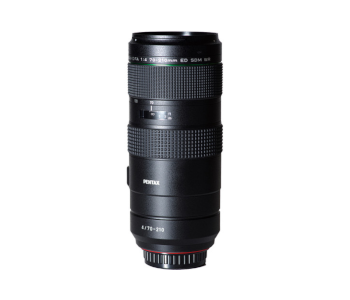 |
| Pentax HD D FA 70-210mm f/4 ED SDM WR |
| 4.7/5.0 |
| Weight: 1.8 lbs. |
| Type: Telephoto zoom |
| Great build quality and weather sealing. |
| Check B&H |
Pentax Lenses Comparison Table
| Image | Product | Overall Rating | Image quality | Build quality | Features | Price |
|---|---|---|---|---|---|---|
 | Pentax HD D FA 70-210mm f/4 ED SDM WR | 4.7 | 4.7 | 4.8 | 4.7 | Check Price |
 | Pentax D FA 28-105mm F3.5-5.6ED DC WR HD | 4.4 | 4.3 | 4.4 | 4.6 | Check Price |
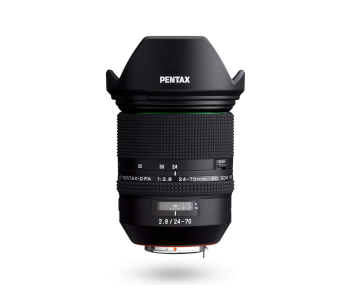 | HD PENTAX-D FA 24-70mmF2.8ED SDM WR | 4.5 | 4.6 | 4.5 | 4.5 | Check Price |
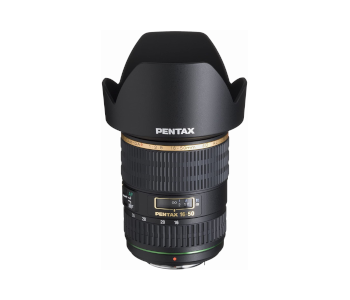 | Pentax SMC DA 16-50mm f/2.8 ED AL IF SDM | 4.4 | 4.4 | 4.3 | 4.4 | Check Price |
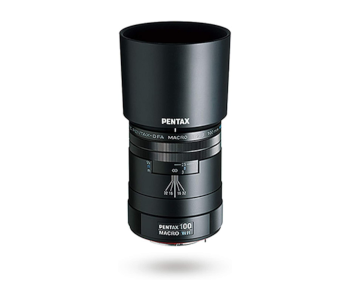 | Pentax 100mm f/2.8 WR D FA SMC Macro | 4.4 | 4.5 | 4.3 | 4.4 | Check Price |
 | Pentax SMC DA 50mm f/1.8 | 4.2 | 4.4 | 3.9 | 4.3 | Check Price |
1. Best Overall – Pentax HD D FA 70-210mm f/4 ED SDM WR
Editor’s Rating: 4.7/5
Pentax’s full-frame lens lineup had a glaring omission for the longest time – a lack of an affordable 70-200mm telephoto. Sure, there’s the f/2.8 version, but it’s quite expensive and heavy to boot. The recently released HD D FA 70-210mm f/4 ED SDM WR is marginally softer while offering improvements to weight and flare resistance. It has superb build quality, balances well on all Pentax full-frame models, and provides the ideal focal length range for portraits, sports, and wildlife.
Overview of Features
You’ll notice the HD D FA 70-210mm f/4 ED SDM WR’s weight first, or lack thereof. At 1.8 pounds, it’s 50-percent lighter than its older brother. This has no impact on Pentax’s excellence standards as the lens is weather-resistant and comes with Pentax HD, the newest flare-combating coating. It also has a fluorine coat that doesn’t allow smudges or dust to mar the glass.
Pentax used the newest version of the SDM or Supersonic Drive Motor to deliver impressive autofocus performance. It locks onto subjects in a fraction of a second and doesn’t hunt in dim light. The noise it produces is minimal and won’t be picked up by the camera unless you’re filming in a library. Manual focusing is accessible at any time thanks to the knurled focus ring. Judging the appropriate distance is easy since a window located between the focus & zoom rings displays values from the minimum 3.1 feet to infinity.
The HD D FA 70-210mm f/4 ED SDM WR’s sharpness isn’t class-leading, but you’ll find little fault with it. The lens shines at 70mm, where the center and edges start close together and barely budge until you reach f/16. You can even use f/22 to get beautiful 18-sided sun stars. Sharpness falls off as you increase the focal length but never dips below good values.
Pentax HD turned out to be an impressive development as the HD D FA 70-210mm f/4 ED SDM WR shows no flaring or artifacts even when the sun is in your shot. It also handles distortion well since neither the barrel nor the pincushion variant exceeds 1.5 percent. Experimenting with a shallow depth of field results in smooth bokeh, and vignetting is nothing to worry about.
What We Didn’t Like
The HD D FA 70-210mm f/4 ED SDM WR’s corner sharpness at maximum aperture degrades as you increase the focal length. It’s great at 70 and 100mm but takes a sharp dip at 135mm and doesn’t bounce back. There’s no chromatic aberration in the center. The corners aren’t as pristine, so you’ll need to use post-processing to get them in line.
| Tech Specs |
|---|
| Dimensions: 3.1 x 3.1 x 6.9 in. |
| Weight: 1.8 lbs. |
| Type: Telephoto zoom |
| Minimum focal length: 70mm |
| Maximum focal length: 210mm |
| Maximum aperture: f/4 |
| Minimum aperture: f/32 |
| Minimum focus distance: 3.1 ft. |
| Field of view: 34.5° to 11.8° |
| Pros |
|---|
| Excellent telephoto zoom that’s cheaper and lighter than its predecessor |
| Great build quality and weather sealing |
| Accurate and quick autofocus |
| No issues with flares and distortion |
| Cons |
|---|
| Soft corners at f/4 past 135mm |
| Some CA in the corners |
2. Best Value – Pentax D FA 28-105mm F3.5-5.6ED DC WR HD
Editor’s Rating: 4.4/5
Camera manufacturers rarely bother to make a kit lens that you’re likely to use once you amass a versatile glass collection, but the D FA 28-105mm F3.5-5.6ED DC WR HD is a welcome exception. It has several advantages budget-conscious Pentax users will appreciate, like the wide focal length range that encompasses everything from landscapes and city photography to portraits and sports. The lens is light, handles effortlessly, and performs better optically than the price tag suggests.
Overview of Features
The D FA 28-105mm F3.5-5.6ED DC WR HD is a versatile zoom lens that combines exacting quality standards with excellent value. It fits snugly onto K-series cameras thanks to a dependable metal mount. Its polycarbonate barrel is dominated by a broad zoom ring that extends the inner barrel when turned. The front glass has HD as well as Super Protect coating, the latter being a less expensive version of fluorine that effectively repels smudges nevertheless.
The DC motor running the lens’s autofocus does so quietly and with pinpoint accuracy. The lens has a variable aperture and becomes slower to acquire focus as you zoom in and let less light into it. However, it’s still fast enough for candid wildlife shots and pics of active kids. You can fine-tune the AF with the manual focus ring at any time. It’s much thinner than the zoom ring but has the same grippy texture and offers enough resistance for precise control.
Some of the D FA 28-105mm F3.5-5.6ED DC WR HD’s sharpness traits are inconsistent and vary from sample to sample. You can count on central sharpness to blaze the trail and maintain high values whatever you do to the aperture and focal length. The corners are a different matter; there’s a gap in quality between them and the center. How broad that gap is initially and whether it will be maintained depends on your specimen. Luckily, the differences aren’t so stark that we’d pronounce the lens a failure, and stepping down from max aperture helps considerably.
Other optical properties are another testament to the lens’s versatility. Expect to take equally breathtaking landscape and portrait photos as flares are hard to introduce while bokeh is round and creamy. Pincushion distortion is negligible, as is the presence of chromatic aberration in the central portion of images.
What’s Bad About It?
The D FA 28-105mm F3.5-5.6ED DC WR HD shows strong light falloff at wide apertures and towards 28mm. It gets as bad as 4.5 stops when the lens is wide open and doesn’t reach tolerable levels at 28mm until f/8, so you’ll need to help things along in Lightroom. This lens shows CA more than two pixels wide in the outer third of the frame.
| Tech Specs |
|---|
| Dimensions: 2.9 x 2.9 x 3.5 in. |
| Weight: 15.5 oz. |
| Type: All-in-one zoom |
| Minimum focal length: 28mm |
| Maximum focal length: 105mm |
| Maximum aperture: f/ 3.5 to 5.6 |
| Minimum aperture: f/ 22 to 32 |
| Minimum focus distance: 1.6 ft. |
| Field of view: 53° to 15.5° |
| Pros |
|---|
| Excellent value for the money |
| Robust and weather-resistant build |
| Great central sharpness |
| Lovely bokeh considering aperture limitations |
| Cons |
|---|
| Pronounced vignetting when wide open |
| Visible CA near the edges |
3. HD PENTAX-D FA 24-70mmF2.8ED SDM WR
Editor’s Rating: 4.5/5
Our value pick was the first Pentax lens for full-frame cameras with a major part of its focal range in standard territory. Its follow-up is the D FA 24-70mmF2.8ED SDM WR, a specialized standard zoom lens with better optics and a focus on sharpness. It’s more expensive but can duke it out with lenses from competing manufacturers that cost twice as much, making it another valuable addition to your collection.
Overview of Features
The D FA 24-70mmF2.8ED SDM WR is another well-built full-frame lens whose design leaves nothing to chance. Its squat polycarbonate body has several sealed segments that prevent water and dust from affecting its delicate internals. 17 elements in 12 groups make up a complex array complete with glass designed to combat light dispersion and chromatic aberration. The lens was also given a full treatment of glare- and smudge-reducing coats.
Pentax used the Supersonic Drive Motor’s most advanced version to handle the D FA 24-70mmF2.8ED SDM WR’s autofocus. The results are pleasing no matter your subjects as the lens latches onto them in an instant and won’t let go even if they start to move unpredictably. There’s no impactful difference between focus acquisition times as the amount of light you’re working with changes.
Portrait photographers will love the D FA 24-70mmF2.8ED SDM WR since its central sharpness is outstanding at wide apertures. You won’t be as thrilled if you’re into landscapes since the corners are blurry at f/2.8 24mm. Luckily, all it takes for them to rally is stepping down to f/4. The lens shines between f/5.6 and f/8, and you can get detailed images at aperture values as low as f/16. Skip f/22 as diffraction cuts too much into clarity.
The bokeh the D FA 24-70mmF2.8ED SDM WR can produce is wonderful; expect uniform circles without harsh borders or onion-like insides. Its complex glass array and Super Protect do an excellent job of keeping shots free from artifacts, especially if you use the provided hood. You’ll find pincushion distortion if you look for it at 70mm, but non-photographers aren’t likely to notice unless you’re taking pictures of buildings.
Are There Drawbacks?
Heavy vignetting and lateral CA in the corners is something anyone will plainly see. Light falloff approaches four stops at f/2.8 24mm and requires decreasing the aperture to f/5.6 to become manageable. Things improve as you zoom in, but you’ll never get rid of vignetting when using the widest aperture.
| Tech Specs |
|---|
| Dimensions: 3.5 x 3.5 x 4.3 in. |
| Weight: 1.7 lbs. |
| Type: Standard zoom |
| Minimum focal length: 24mm |
| Maximum focal length: 70mm |
| Maximum aperture: f/2.8 |
| Minimum aperture: f/22 |
| Minimum focus distance: 1.3 ft. |
| Field of view: 84° to 34.5° |
| Pros |
|---|
| Excellent central sharpness |
| Immaculately built |
| Exceptionally fast and accurate autofocus |
| Beautiful bokeh |
| Cons |
|---|
| Pronounced vignetting at f/2.8 regardless of focal length |
| Noticeable chromatic aberration in the outer third of images |
4. Pentax SMC DA 16-50mm f/2.8 ED AL IF SDM
Editor’s Rating: 4.4/5
We’ve only talked about full-frame lenses so far, but Pentax made a name for itself with fantastic APS-C cameras and lenses. The SMC DA 16-50mm f/2.8 ED AL IF SDM reviewed here corresponds to 25-70mm in full-frame terms, meaning it’s a standard zoom perfect for products, groups, interiors, and portraits. It’s wickedly sharp, built to the highest standard, and an accurate performer.
Overview of Features
The 16-50mm f/2.8 has a gold ring around the barrel, signifying Pentax’s highest tier of build quality excellence. This becomes apparent as you handle the lens as it’s tightly put together yet responsive when you start playing with its zoom & focus rings. It focuses internally and has a constant maximum aperture, so 1.2 pounds Is a reasonable weight. It is weather-sealed, has Super Protect, and comes with a petal-shaped lens hood.
The autofocus has its ups & downs. It consistently tracks subjects and is silent enough not to frighten animals if you’re using the 16-50mm f/2.8 at its minimum focusing distance of 12 inches. On the other hand, its motor is not the quickest we’ve seen. Manual focusing is smooth and precise, although you might need to break the ring in as it tends to grind for the first couple of uses.
The 16-50mm f/2.8’s sharpness has an unusual progression. The central third of an image will be remarkably sharp at max aperture and even approaches world-class levels if you step down to f/5.6 or f/8 at 16mm. The corners and edges fall far behind at this value, and it takes going to f/4 or lower to get them in line. Increasing the focal length results in slightly less central sharpness. Edge and corner progression remain unaffected, which means that they’re getting better as you zoom in.
This is another Pentax lens you can use for landscape shots without hesitation as it has superb flare resistance and minimal loss of contrast if shooting with strong light in the frame. Vignetting is tolerable at 1.5 stops, and pincushion distortion at 50mm is academic. F/2.8 makes for beautifully shallow depth of field accompanied by dreamy highlights.
What We Didn’t Like
The 16-50mm f/2.8 SMC DA 16-50mm f/2.8 ED AL IF SDM has two fixable drawbacks. It shows moderate barrel distortion levels at 16mm and strong chromatic aberration on high-contrast parts of the image close to the edges. Either shoot JPEGs and let your camera take care of both or use post-processing to eliminate them manually.
| Tech Specs |
|---|
| Dimensions: 3.3 x 3.3 x 3.9 in. |
| Weight: 1.2 lbs. |
| Type: Standard zoom |
| Minimum focal length: 16mm |
| Maximum focal length: 50mm |
| Maximum aperture: f/2.8 |
| Minimum aperture: f/22 |
| Minimum focus distance: 11.9 in. |
| Field of view: 83° to 31.5° |
| Pros |
|---|
| Outstanding central sharpness |
| Excellent build quality |
| Handles vignetting well |
| Creates beautiful bokeh and out-of-focus blur |
| Cons |
|---|
| Pronounced barrel distortion |
| Noticeable CA near the edges |
5. Pentax 100mm f/2.8 WR D FA SMC Macro
Editor’s Rating: 4.4/5
Pentax offers several compelling macro photography choices with the 100mm f/2.8 WR D FA SMC Macro taking the lead. It’s a well-made, compact lens distinguished by outstanding sharpness across the frame and no noticeable distortion. Its focus is spot on, so you can get some distance between the front element and subjects for more light.
Overview of Features
You wouldn’t think that the 100mm f/2.8 WR D FA SMC Macro costs less than $500 by examining it as the lens boasts an all-metal body and a finish worthy of Pentax’s top-tier offerings. You’ve got weather sealing, an assortment of protective coatings, and a sturdy metal mount to ensure its longevity. The front-most glass is already recessed, but e deep barrel-shaped lens hood provides extra protection from stray light.
We were pleased by the persistence and accuracy of the autofocus. However, it’s on the slower side and hampered by the lack of a focus limiter switch. The lens uses an older screw motor instead of SDM and is louder than the competition. Manual focusing is effortless, though, since the ribbed ring offers the right amount of resistance.
Macro lenses need to excel at sharpness, and the 100mm f/2.8 WR D FA SMC Macro doesn’t disappoint. It’s fantastic for creating blurry backgrounds as f/2.8 is already razor-sharp with minimal differences as you move away from the center. Diffraction sets in unusually early and can already be observed at f/8. Even so, the resolution remains well-defined even at smaller apertures.
The 100mm f/2.8 WR D FA SMC Macro is entirely distortion-free. It exhibits some vignetting at f/2.8 you can leave in for artistic purposes or correct for easily. Out-of-focus highlights are lovely, and bright environments aren’t a problem as the lens retains color vibrancy and contrast even in glaring light.
What’s Bad About It?
The 100mm f/2.8 WR D FA SMC Macro has quality control issues relating to chromatic aberration. Some specimens show heavy fringing in the form of purple and cyan lines in areas of high contrast while others fare much better.
| Tech Specs |
|---|
| Dimensions: 3.2 x 3.2 x 2.5 in. |
| Weight: 12 oz. |
| Type: Macro lens |
| Focal length: 100mm |
| Maximum aperture: f/2.8 |
| Minimum aperture: f/32 |
| Minimum focus distance: 11.8 in. |
| Field of view: 24.5° |
| Pros |
|---|
| True 1:1 magnification at 11.8 inches |
| Excellent build quality |
| Outstanding uniform sharpness |
| No distortion |
| Cons |
|---|
| Lack of limiter slows down autofocus |
| Inconsistent CA between specimens |
6. Best Budget Option – Pentax SMC DA 50mm f/1.8
Editor’s Rating: 4.2/5
Pentax lovers who lack the means to purchase thousand-dollar glass don’t have to miss out on tack-sharp photos and remarkable optics if the first lens they purchase is the SMC DA 50mm f/1.8. It’s a bright standard prime perfectly-suited for portraits or urban photography from sunup to midnight. Small, affordable, and sharp, it’s the logical first purchase after you’ve gotten everything you can out of your APS-C Pentax’s kit lens.
Overview of Features
The SMC DA 50mm f/1.8 is a tiny lens that barely registers when mounted onto the camera. It’s sleek enough for easy carrying inside a jacket pocket and built from plastic. That includes the mount, which shouldn’t bother you unless you frequently switch out lenses. A lens hood isn’t included, but the 52mm thread is compatible with many cheap 3rd-party options.
Autofocus is where the SMC DA 50mm f/1.8 shows its price limitations the most. It’s powered by an older screw-type motor that rotates the ring as it moves. It’s not sluggish and keeps up with erratically-moving subjects well enough, but it’s loud and unsuitable for video recording. The lens keeps a constant length as it focuses internally. Its thread accepts filters and polarizers, which you’ll need to preserve contrast when shooting wide open.
Here we finally have a Pentax lens that handles chromatic aberration very well and consistently. Its 0.7 percent of barrel distortion is well within acceptable limits, as is a single stop of light falloff at f/1.8. The lens makes wonderful bokeh, especially at the max aperture, where it’s round and soft for a dreamy effect. Blurred backgrounds smudge together, which you can use to turn colorful backdrops into fun surroundings for your subjects.
The SMC DA 50mm f/1.8 impresses with its overall sharpness, considering how little it costs. The corners are only soft at f/1.8, which will mostly be irrelevant as you’ll be taking advantage of the shallow DOF anyway. Things start looking much better at f/2.8 and culminate in almost uniform corner to corner sharpness at f/5.6. Its resolution starts decreasing at f/8 but remains high until you reach f/16.
Are There Drawbacks?
The SMC DA 50mm f/1.8 is optically, sound, so our main gripes with it have to do with the build. It feels cheap and thin, and lack of a metal mount means it will wear out faster. Lenses with this focal length can work for macro photography in a pinch, but the SMC DA 50mm f/1.8 is too loud for taking pictures of animals and insects.
| Tech Specs |
|---|
| Dimensions: 2.5 x 2.5 x 1.5 in. |
| Weight: 4.3 oz. |
| Type: Standard prime |
| Focal length: 50mm |
| Maximum aperture: f/1.8 |
| Minimum aperture: f/22 |
| Minimum focus distance: 1.5 ft. |
| Field of view: 31.5° |
| Pros |
|---|
| Excellent performance at an affordable price |
| Quick and accurate focus despite using an older motor |
| No CA or distortion issues |
| Great low-light performance |
| Cons |
|---|
| Flimsy build |
| Loud autofocus |
Contents
- Pentax Lenses Comparison Table
- 1. Best Overall – Pentax HD D FA 70-210mm f/4 ED SDM WR
- Overview of Features
- What We Didn’t Like
- 2. Best Value – Pentax D FA 28-105mm F3.5-5.6ED DC WR HD
- Overview of Features
- What’s Bad About It?
- 3. HD PENTAX-D FA 24-70mmF2.8ED SDM WR
- Overview of Features
- Are There Drawbacks?
- 4. Pentax SMC DA 16-50mm f/2.8 ED AL IF SDM
- Overview of Features
- What We Didn’t Like
- 5. Pentax 100mm f/2.8 WR D FA SMC Macro
- Overview of Features
- What’s Bad About It?
- 6. Best Budget Option – Pentax SMC DA 50mm f/1.8
- Overview of Features
- Are There Drawbacks?

